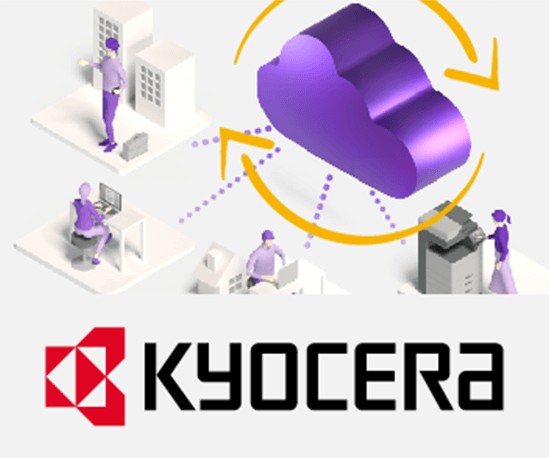

24 February 2022
Demystifying Cloud Computing – Part 2: Public, Private, Hybrid Cloud
by Stephanie Schuldes
Making decisions about IT infrastructure today is virtually impossible without understanding the fundamentals of cloud computing. This miniseries takes you through the basics, with part one having introduced the different service models (IaaS, PaaS, SaaS). Today, we’ll look at the cloud deployment models and explain what there is to know about public, private, and hybrid cloud scenarios.
What is Public Cloud?
The public cloud is probably the most commonly known model. It makes it possible for many users to gain access to services via the public internet. The data of the users is kept separate, allowing access to only their own data (multitenancy).
Use cases
- End-user applications, such as email, document and photo storage, and so on
- Enterprise application development environments, including testing and deployment
- Additional resources for outsourcing during peak loads
Advantages
- A wide range of services is available.
- Subscription models allow for flexible costs, and free entry is frequently possible.
- Offers high scalability
- Reduces the burden on internal IT and development by outsourcing infrastructure management
Disadvantages
- Legacy system integration is difficult or impossible.
- With less control over infrastructure, compliance and data protection requirements may not be met (for instance, data that falls under GDPR-law requires specific legal arrangements to be stored in US-based clouds).
- Security risks associated with public internet access
- Unnecessary costs (higher TCO) due to a lack of understanding of the resources that are actually required

What is Private Cloud?
With a private cloud, access to services and resources is restricted to a single organization and is not available to the general public. The operation is either handled by the company or in a data center that is managed by a third party.
Use cases
- Industries that are regulated
- Sensitive data processing necessitates control over data protection and security mechanisms.
- Greater control over the data center is required.
- There is sufficient budget for the operation of one’s own data center, including all security and performance-related factors.
Advantages
- Exclusive environment for one’s own organization
- Better fulfillment of data protection and compliance requirements through access restriction and individual data processing regulation
- Scalability and flexibility without sacrificing security
- Customized architecture is possible.
- Integration with legacy systems is possible.
Disadvantages
- More expensive than public cloud, particularly if resources are only required for a short time
- Possible restrictions on mobile working due to increased security precautions
- Scalability is determined by the specific implementation of the data center (limited with on-premises).
- The organization’s maintenance and compliance responsibilities are greater than with public cloud.

What is Hybrid Cloud?
A hybrid cloud is a combination of public and private clouds. The goal is to create a unified and interconnected environment that enables seamless scaling and migration of apps that can access data from any cloud without concern for the underlying infrastructure. This is made possible by cloud-native technologies that emphasize portability, virtualization, and automation:
- Microservices implement specific functions as reusable and independent components.
- Containers provide the environment in which microservices can run and are automatically deployed and orchestrated across cloud environments by a platform such as Kubernetes.
- Infrastructure virtualization enables developers to create any environment on demand, using resources from multiple clouds or on-premises.
According to the Red Hat Global Tech Outlook 2022, 30 percent of enterprises use hybrid cloud, while the share of pure public or private cloud has decreased.
Use cases
- Temporary supplementation of private cloud resources during peak loads
- SaaS application deployment over secure networks
- A strategic step toward moving from on-premises to cloud computing
Advantages
- By combining the flexibility of the public cloud with the individual adaptability of the private cloud, you can get the best of both worlds.
- Allows to choose the best cloud services from a variety of vendors and combine them to meet business needs and applications
- Deployment automation allows to move workloads as needed.
- Store data in accordance with the required level of security
- On-premises system integration is possible, allowing for a gradual transition to the cloud or outsourcing only during peak loads, as well as the protection of previous investments (old systems can still be used).
- New analysis and automation options (AI/ML) enable innovation, allowing for the development of new business models.
- Enhanced resilience through data distribution across multiple data centers
Disadvantages
- Cost control is more difficult due to multiple environments and services.
- The IT environment is becoming more complex.
- Multiple services and environments must be integrated.
Use of Cloud Services must be Strategically Planned
When deciding which cloud architecture is the best fit for one’s needs, a variety of factors needs to be considered. The reliability, performance, and security of IT environments are critical for business continuity.
Some technological, personnel, and financial requirements to be considered are for example:
- What is the budget?
- What skills does the team have?
- How quickly must a result be available?
- How complex are the requirements for the result?
- How much flexibility must the tools used provide?
- What type of application is to be developed (single system for one customer, eCommerce platform for many customers, etc.)?
- What are the requirements for data protection, compliance, and so on?
- What are the application scenarios (e.g., internal collaboration vs. external customer-relevant services such as eCommerce systems)?
A recent Techconsult study on cloud deployment in German SMEs revealed that the use of different cloud architectures varies depending on the size of the organization. The results show that the private cloud is most commonly used by medium-sized businesses (500-999 employees, 55 percent). Large corporations use both hybrid cloud and private cloud equally (43 percent). Small businesses (50-99 employees) are the most likely to use pure public cloud. In general, hybrid cloud and multi-cloud are growing, particularly in smaller medium-sized businesses (100-499 employees) and in half of companies larger than 1,000; pure private cloud is declining.
Conclusion
Cloud computing is already a significant component of the majority of IT infrastructures, and hybrid cloud, in particular, is quickly becoming a critical building block for new applications and environments. Because the deployment models, pricing models, and service features of IaaS, PaaS, and SaaS are converging, it can be difficult to determine which model is the best fit for your operating requirements.
A good rule of thumb is to use a private cloud infrastructure when security and compliance concerns outweigh cost considerations. Using a public cloud infrastructure takes precedence in situations where cost alone matters. The hybrid model represents an attractive compromise between the other two in situations where security and compliance are of great importance. Moreover, the decision to use either one of the three models must be based on factors such as the type, scope, and workloads of the application to be developed, as well as budget, team skills, timeline, and compliance requirements.
You might also like
Do you have any further questions?




























